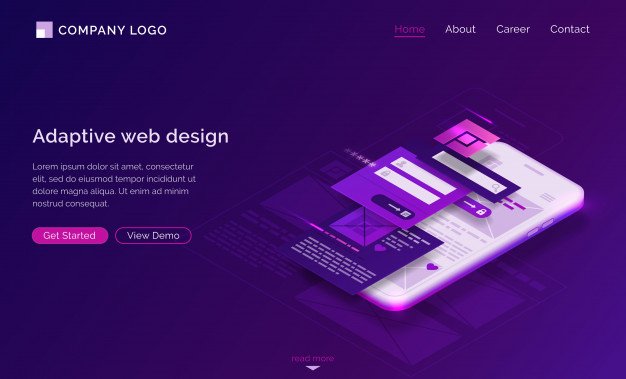
A good website design is usually a daunting, obstinate, and time-consuming task. But, a professional website design conveys your business strategy to interact with consumers and visitors. Even though there may be billions of websites on the web, very few of them can stick the visitor for a while to read about full-service manuals.
Thousands of people spend hours every week on the Internet to shop and order food and other routine products. Many factors affect the user experience when users visit a website. Not only the website’s interface enhances the overall performance and usability of the website. But in addition, the functionality of the website plays a vital role in pushing up your website at the top.
Transparent view of your goals
For a web design to be successful, it must always cater to the needs of its users. Does your website have users’ relative information they may be searching for to interact with you or making purchases?
Your website should contain well-written, concise content that addresses a specific need of your website visitors most comprehensively and efficiently to grab the attention from every page.
Typography
Make use of easier-to-read fonts. Arial and Helvetica are examples of modern sans-serif fonts that are appropriate for the body texts. Make sure to choose the proper typefaces for every design element, such as headers, body text, buttons, etc.
You can never have a perfect design unless your content on the website is easy to read. Users can still find the information they need on the website due to its text readability. These data are very familiar to search engines, so they become a crucial component of SEO activities.
Easy Navigation
While designing a website, you must keep in mind and implement this principle. According to the survey, 94% of web designers and even users commits easy navigation as one of the most vital features of the website.
Keeping the navigation bar simple and less messy creates user affordability to overview all pages and content effortlessly. If your site is hard to navigate, users get distracted, and, therefore, your website survey will not go as smoothly as you want for users’ feasibility.
Responsive Design
Almost every time you visit a website, you use a device with a different screen size, which makes a mobile-friendly website imperative. Since smartphone, tablet, and phablet usage is increasing, web design must be appropriate according to various device sizes.
You will likely lose the battle with your competitors if your website design does not accommodate all screen sizes. This means your website should adjust according to different screen widths, a website that tailors itself to fit all size devices.
Quick loading
We don’t like websites that take longer to load. We get back to other sites or at the google search result page if the site loads too slowly. Optimize your website’s image sizes by combining the script and CSS to a central HTML or JavaScript file, as this will reduce HTTP requests.
We need a website that runs smoothly as butter, not slow as a turtle. So design your website in such ways that its performance does not effects users visiting your site.
Simple UI and UX
UI stands for User Interface. Any sort of visual interaction at the website that a user interacts with is the user interface. It consists of buttons, sliders, content area, images, sliders, text fields, micro and major animations, and every single visual element. If the UI design of the website is attractive and simple, visitors are more likely to stick around.
UX stands for User Experience. User experience is interaction feasibility, a user involvement to determine how the UI elements are simple enough to interact. UX designers decide how the users will interact and operate with User Interfaces.
Colors Schemes
When selected well, a color palette can make all the difference to users’ experiences. It is crucial to find a complementary color scheme. By alternating the colors of the text and background, readers can easily read the text.
Vibrant colors evoke emotions and should be used sparingly only on buttons and call-to-action elements. In addition, white space or negative space is a great way to create a clean, modern look for your website.
Communicate Well
A visitor clicks on your website to get some information about the services offered or comes up for making an immediate purchase. If the website’s overall experience including content, images, offerings, the website design is catchy and, the customer sticks with the visit. Then you can say that you are communicating well with the customers to make them satisfied.
Clearly describe the relevant sections, using headlines and sub-headlines, eliminating unnecessary words, and using bullet points to guide them on the relevant section, rather than just fooling them around to stay at the site.



